Types of Garden Lighting
Here's a useful guide on some of the popular garden lights available and where to use them.
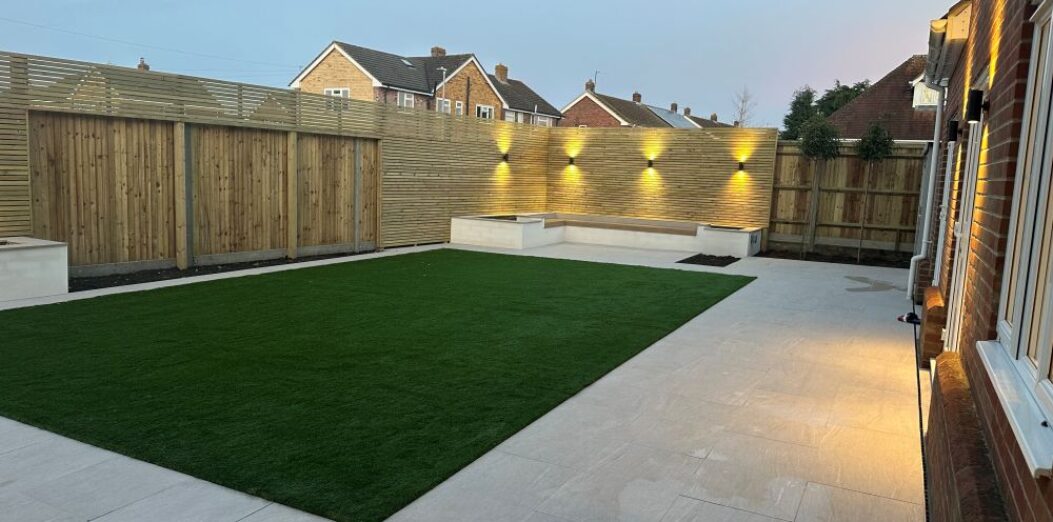
Introduction
A good lighting design will usually serve a practical purpose, whilst at the same time be aesthetically pleasing. By lighting up your paths, patios, plants and garden features, you can create warm and beautiful oases of light. There are many options regarding style, colour and material, but below I have listed a few options for the type of lighting we would typically use and where to use them effectively.
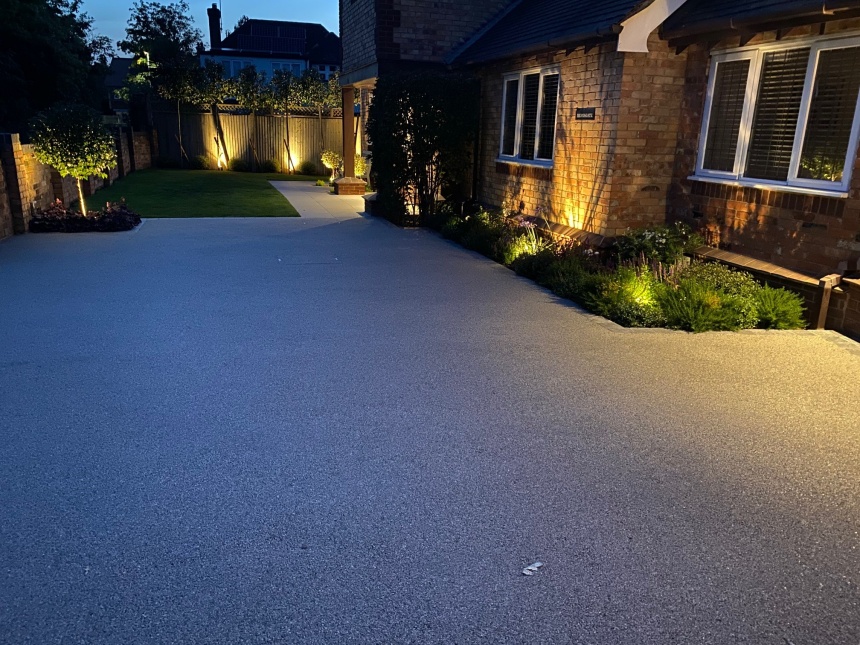
Spike Lights
Spike lights are the most popular type of lighting we install in our designs. Spotlights can be used for multiple purposes throughout a design, as they can be easily positioned and the angle of the light altered. Spike lights give light in one direction and are best used to highlight features such as planting, low level walls or statues to create atmosphere.
Up / Down Lights
This type of lighting is often used to wash light up or down over an object, whether that be a house, wall, statue, or feature tree. Up lights are installed at ground level pointing light up onto an object giving a dramatic effect. Lights can also be fixed into tree canopies thereby down lighting or ‘moon lighting’ mature trees.
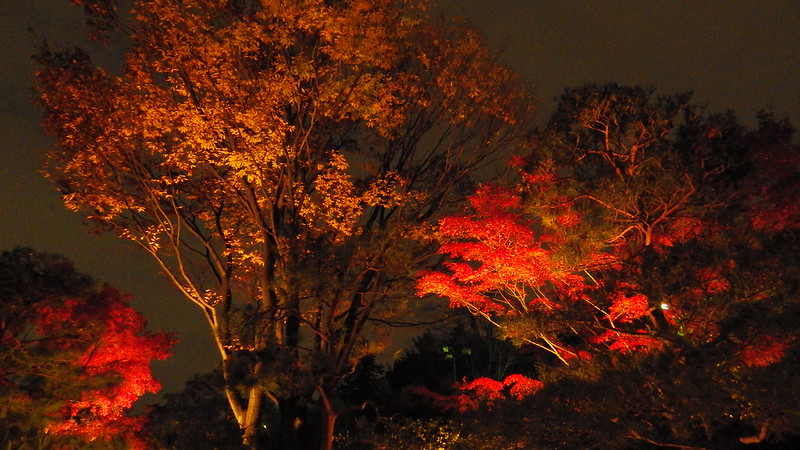
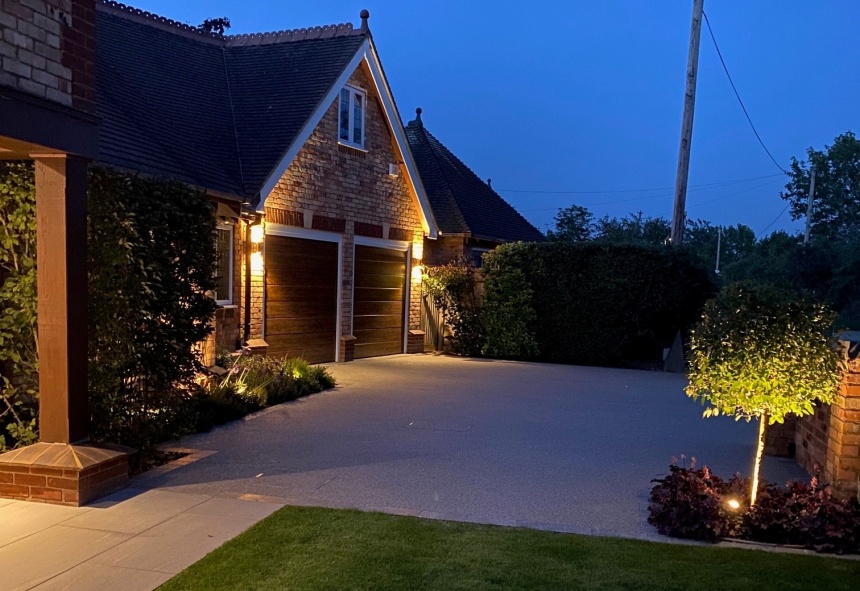
Wall Lights
If you want to be able to eat, read and perform more detailed tasks, downlighting can work very well. Wall lights are used for this purpose and, as the name suggests, can be fixed to a wall, fence or pergola. They often cast a fair bit of light down onto a space, meaning they are great for lighting up seating areas or door entrances. They can be used functionally and decoratively when used well.
Step Lights
If you have steps in your garden, it is worth considering installing step lights for safety and highlighting them within a design. They are best installed on the walls beside the stairs rather than set into the step risers. This will give a wash of light across the step and prevent light shining directly into your face.
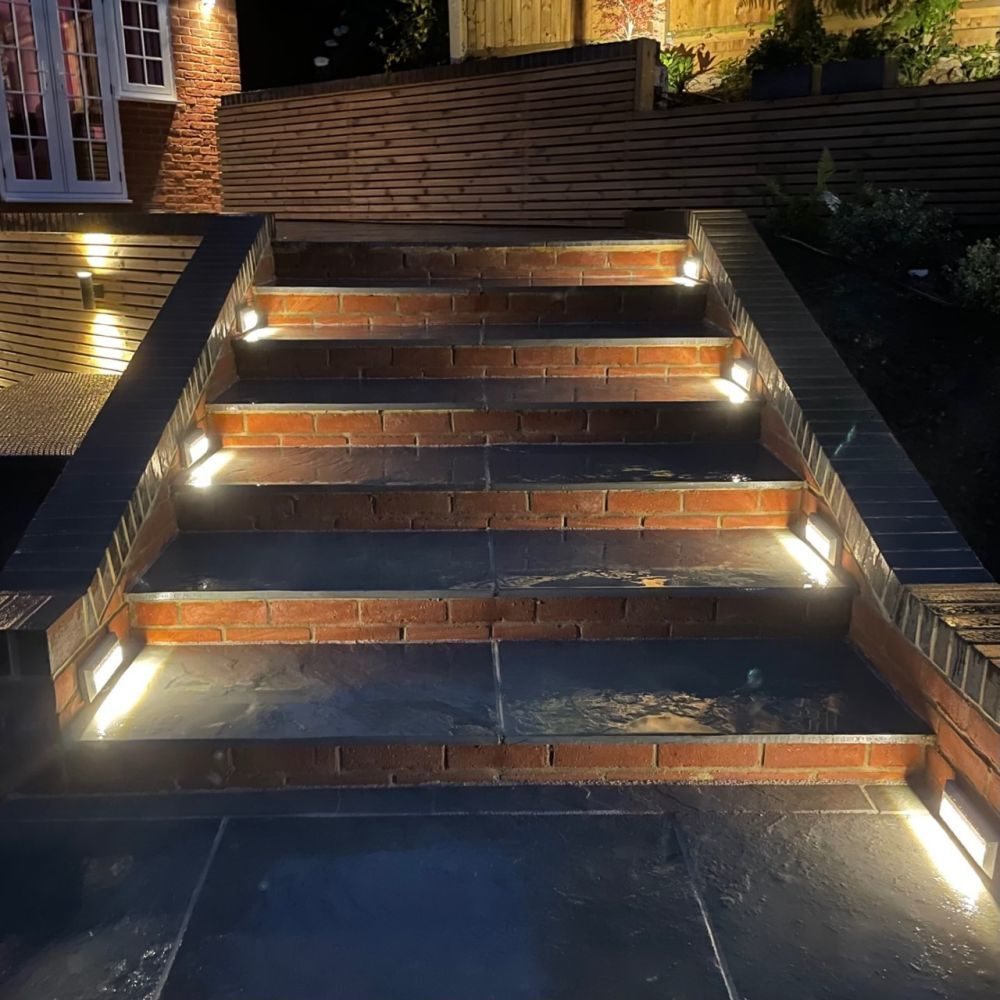
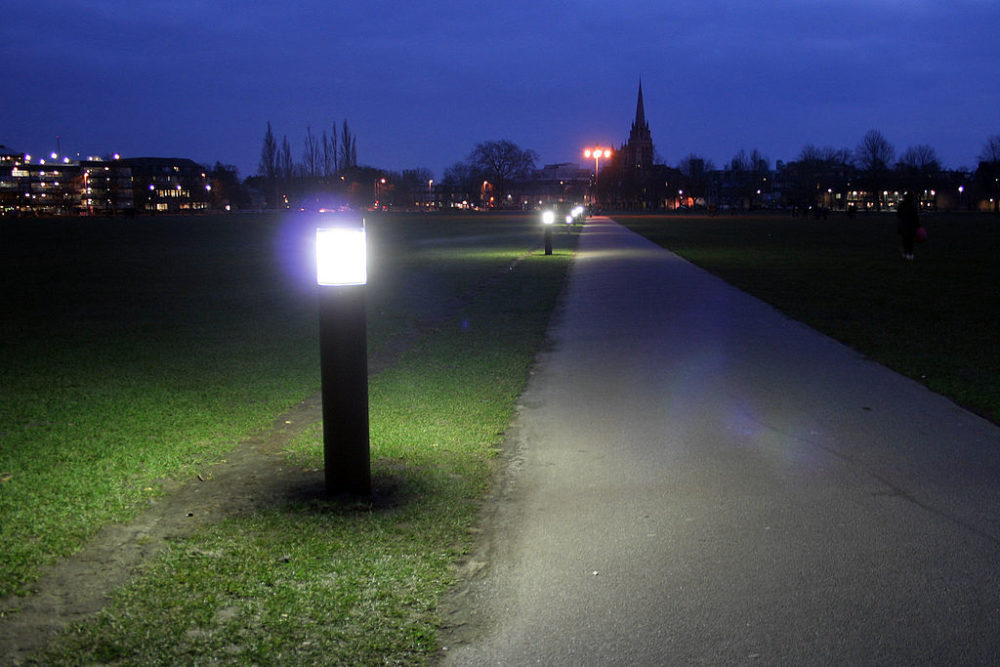
Bollard Lights
Bollard lights are typically used to light up pathways in larger spaces or driveways. When choosing bollard lights consider where you want the light to be cast, as some offer 360 degrees of light, while others will only illuminate a certain area.
This type of lighting often has a bulky appearance, and they can draw the eye within a design. Therefore, they are often not the best option for smaller spaces and better used on wide paths or driveways for practical safety use.
String Lights
Also referred to as fairy lights, most people would associate this type of lighting as a staple Christmas decoration. However when used well, string lighting can create a cosy feel to a space. Whether wrapped around a feature tree or draped over a pergola, there is a wide variety of string lights available to suit your style.
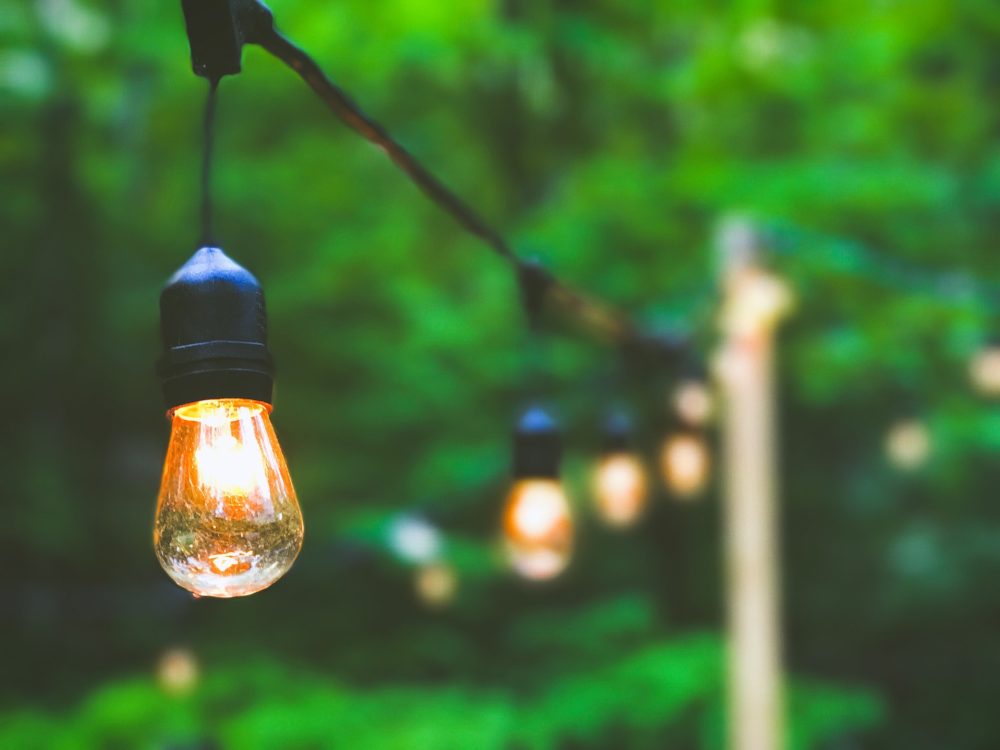
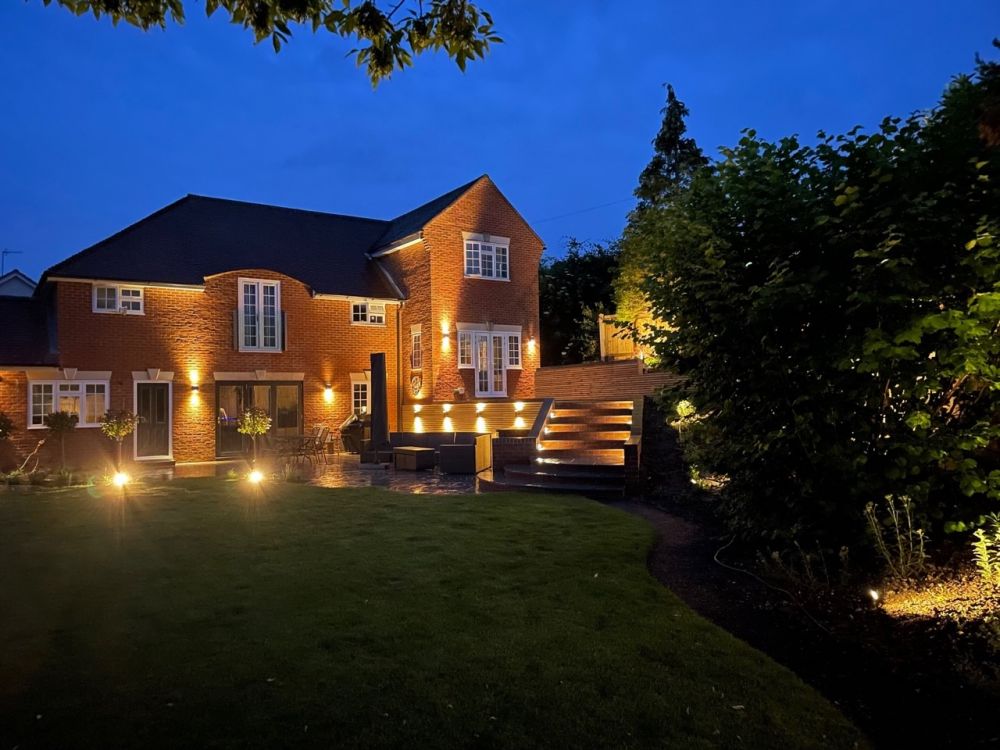
Finally…
It is worth noting that lighting systems and their installations can be pricey, so take the time to think things through carefully before embarking on your project. If you’re looking for ideas, you can read more about various garden lighting effects and some practical pointers here.
For complex lighting systems, it is normally worth consulting a specialist garden lighting company for advice. But in most domestic situations, a professional garden landscaper can work with you and a qualified electrician to design and install beautiful and highly functional systems. Most lights we install have LED bulbs with options available on colour and amount of light omitted. LED lights have a low energy consumption and long service life which makes them a relatively low cost to run.
Photo Credits
“Shirotori Teien Garden Light up” by ururun4412 is licensed under CC BY-SA 2.0; “Parkers Piece Trial Lighting” is licenced under the Creative Commons Attribution-Share Alike 3.0 Unported license